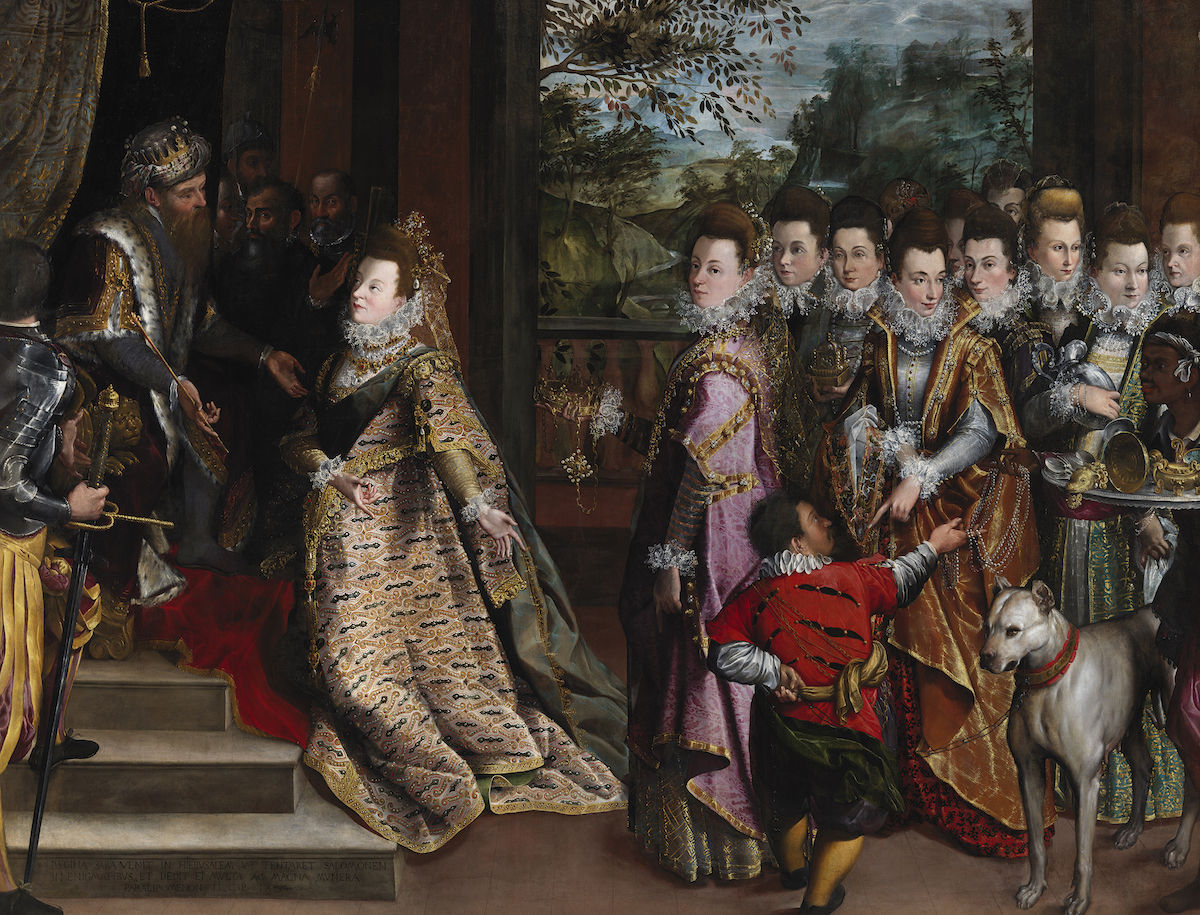This wonderful Cornish workshop and museum is dedicated to the legacy of studio pottery trailblazer Bernard Leach
Fascinating details revealed in a brilliant painting by Lavinia Fontana
Fascinating details revealed in a brilliant painting by Lavinia Fontana
3 Aug 2023
 Caption: The Visit of the Queen of Sheba to King Solomon, 1599. Image: National Gallery of Ireland
Caption: The Visit of the Queen of Sheba to King Solomon, 1599. Image: National Gallery of Ireland
Lavinia Fontana (1552–1614) was the first woman in Europe to achieve commercial success as a painter beyond the confines of a convent or court.
Born in Bologna, Italy, she was also the first woman to establish her own workshop, and to paint large-scale public altarpieces and female nudes. She had 11 children, and achieved all this at a time when
women were denied acceptance into key artists’ academies and guilds, and were not permitted to represent themselves in business.
This work, The Visit of the Queen of Sheba to King Solomon, 1599, is considered her most ambitious painting.
Monumental and extraordinarily detailed, its origins have been shrouded in mystery, but a recent conservation and research initiative funded by the Bank of America Art Conservation Project has uncovered its secrets.
Here are six key elements of this fantastic painting to focus on…
1. Set in stone
The protagonists are identified as Solomon and the Queen of Sheba by a Latin inscription on a stone step in the foreground. Their clothing, and that of their retinues, however, suggests a 16th-century Italian court.
Recent research reveals these figures are the Duke and Duchess of Ferrara, Alfonso II d’Este and Margherita Gonzaga, in the guise of the biblical royals. The pearls seen across the canvas are visual clues that support the identification of Margherita: her name is Latin for pearl.
2. Ruffled details
Have a look at the lace ruffs: each is different, perhaps alluding to the heraldic lace designs published in Bologna in 1591 by Arcangelo Passerotti. Like Scottish tartan, noble families in Bologna had their own lace pattern. Fontana renders the ruffs with exceptional attention to detail, picking out the embroidered pattern with three-dimensional strokes of paint that recall the texture of the real thing.
3. Familiar faces
The faces of the queen’s lavishly dressed ladies-in-waiting find parallels in other portraits by Fontana. For example, the features of the woman third from the left in the procession, who is holding a fine, golden clock, shows affinity with the sitter of Fontana’s Portrait of an Unknown Noblewoman Seated in a Chair, today at Petworth House, Sussex.
4. Silky clues
The clothing worn by Sheba’s retinue reflects the fashions of the late 16th century, and surviving fragments of textiles from this period demonstrate that Fontana was drawing from life. These ornate textiles might be seen as a homage to Bologna, where silk production was an important industry and source of the city’s wealth and fame.
5. Timely note
For decades, the composition of this painting had been dated stylistically to the late 1590s or early 1600s, but cleaning has revealed an inscription added to the base of the aforementioned clock, which now dates the painting firmly to 1599.
6. Hopes revealed
Margherita was Alfonso d’Este’s third wife, and his last hope to produce an heir. Look for the details that allude to this. They include a gold marten head on a tray on the right (a Renaissance fertility charm), a tiny Cupid on the Queen’s crown as a symbol of carnal desire, and a nest in the tree in the background, as reference to reproduction.
SEE
See this painting in the exhibition Lavinia Fontana: Trailblazer, Rule Breaker until 27 August at the National Gallery of Ireland, Dublin; nationalgallery.ie
About the Author
Aoife Brady
Is curator of Italian and Spanish art at the National Gallery of Ireland
JOIN OUR MAILING LIST
Become an instant expert!
Find out more about the arts by becoming a Supporter of The Arts Society.
For just £20 a year you will receive invitations to exclusive member events and courses, special offers and concessions, our regular newsletter and our beautiful arts magazine, full of news, views, events and artist profiles.
FIND YOUR NEAREST SOCIETY
MORE FEATURES
Ever wanted to write a crime novel? As Britain’s annual crime writing festival opens, we uncover some top leads
It’s just 10 days until the Summer Olympic Games open in Paris. To mark the moment, Simon Inglis reveals how art and design play a key part in this, the world’s most spectacular multi-sport competition



